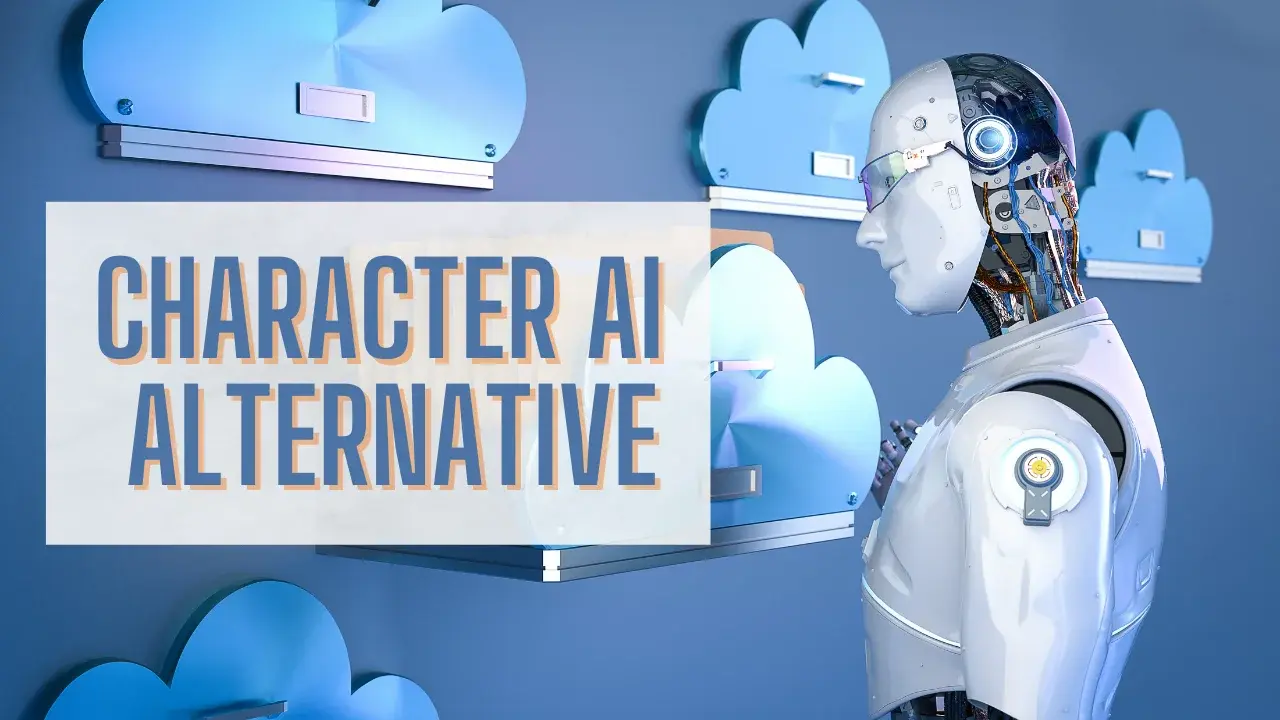In recent years, artificial intelligence (AI) has revolutionized various industries, including character design and development. Character AI Alternative refers to the use of AI technology to create, animate, and imbue characters with lifelike qualities, behaviors, and personalities. While traditional methods of character creation involve manual design and animation, character AI offers an alternative approach that streamlines the process and introduces new possibilities. In this comprehensive guide, we’ll explore the concept of character AI, its applications, benefits, and alternative approaches.
Understanding Character AI Alternative
Character AI Alternative encompasses a range of techniques and technologies aimed at automating aspects of character creation and animation. These techniques leverage machine learning algorithms, neural networks, and natural language processing to analyze and generate characters based on predefined parameters, user input, or real-world data. Character AI systems can generate 2D or 3D characters, animate them, and even simulate interactions with users or environments.
Applications of Character AI Alternative
Character AI finds applications across various industries and domains, including:
- Entertainment: In the entertainment industry, character AI is used to create virtual characters for video games, films, and animations. These characters can exhibit complex behaviors, emotions, and interactions with other characters and the environment.
- Education: Character AI is employed in educational settings to develop interactive learning experiences and virtual tutors. These virtual characters can engage with students, provide personalized feedback, and adapt their teaching approach based on individual learning styles.
- Customer Service: In customer service applications, character AI is used to create virtual assistants or chatbots that interact with customers. These virtual characters can answer questions, provide assistance, and simulate human-like interactions to enhance the customer experience.
- Healthcare: Character AI is utilized in healthcare for applications such as medical training simulations, virtual therapy sessions, and patient education. Virtual characters can guide patients through exercises, provide emotional support, and deliver personalized healthcare information.
Benefits of Character AI Alternative
Character AI offers several benefits over traditional character design and animation methods, including:
- Efficiency: Character AI automates many aspects of character creation and animation, reducing the time and resources required to develop virtual characters.
- Scalability: Character AI systems can generate large numbers of characters quickly and efficiently, making them ideal for projects requiring multiple characters or variations.
- Customization: Character AI allows for the creation of highly customizable characters that can be tailored to specific requirements, preferences, or user input.
- Interactivity: Characters generated using AI technology can exhibit dynamic behaviors and interactions, enhancing user engagement and immersion in virtual environments.
Alternative Approaches to Character AI Alternative
While Character AI offers significant advantages, it is not without its limitations and challenges. Alternative approaches to character creation and animation include:
- Manual Design: Traditional manual design methods involve artists creating characters from scratch using design software or traditional art techniques. While labor-intensive, manual design allows for precise control over every aspect of the character’s appearance and behavior.
- Motion Capture: Motion capture technology involves recording the movements of human actors and translating them into digital animations. This approach yields highly realistic character animations but may require specialized equipment and expertise.
- Procedural Generation: Procedural generation techniques use algorithms to generate characters and environments based on predefined rules or parameters. While less flexible than character AI, procedural generation can produce large quantities of content quickly and efficiently.

Challenges in Character AI Development
Despite its potential benefits, the development of Character AI poses several challenges. One major challenge is achieving realism and believability in character behavior and interaction. Creating characters that exhibit lifelike emotions, expressions, and responses requires advanced AI algorithms capable of understanding human psychology and social dynamics. Additionally, ensuring diversity and representation in AI-generated characters is essential to avoid perpetuating stereotypes or biases.
Ethical Considerations
Ethical considerations also play a significant role in Character AI development. Developers must consider the potential societal impacts of AI-generated characters, including their influence on culture, identity formation, and social norms. Ensuring that AI-generated characters adhere to ethical guidelines and promote inclusivity, diversity, and respect for human dignity is crucial to fostering positive outcomes and mitigating potential harm.
Technical Limitations
Technical limitations present another challenge in character AI development. AI algorithms may struggle to accurately model complex human behaviors and interactions, leading to uncanny or unrealistic character animations. Addressing these limitations requires ongoing research and development in areas such as natural language processing, affective computing, and computer graphics to improve the fidelity and realism of AI-generated characters.
User Acceptance and Adoption
User acceptance and adoption are critical factors in the success of Character AI applications. Users may be hesitant to interact with AI-generated characters if they perceive them as unnatural or lacking in authenticity. Building trust and rapport with users through engaging storytelling, compelling dialogue, and responsive behavior is essential to fostering positive user experiences and encouraging widespread adoption of character AI technologies.
Future Directions
Looking ahead, the future of character AI promises continued innovation and evolution. Advances in machine learning, deep learning, and reinforcement learning are expected to drive significant improvements in the realism, interactivity, and adaptability of AI-generated characters. Additionally, interdisciplinary collaboration between researchers, artists, psychologists, and technologists will play a crucial role in pushing the boundaries of character AI and unlocking new creative possibilities in character design and animation.
Character AI Alternative: Conclusion
Character AI Alternative explores a powerful alternative to traditional methods of character creation and animation, enabling the rapid development of lifelike characters for various applications. By leveraging AI technology, developers can streamline the character design process, enhance interactivity, and create engaging user experiences. However, alternative approaches such as manual design, motion capture, and procedural generation also play essential roles in character development, offering unique advantages and opportunities for creativity and innovation in the field. As AI technology continues to advance, the future of character creation promises to be exciting and full of possibilities.
Frequently Asked Questions (FAQs) About Character AI Alternative
Q1: What is a character AI alternative?
A1: A character AI refers to any technology or method used as an alternative to traditional character AI for creating lifelike virtual characters or interactions.
Q2: What are some examples of character AI?
A2: Character AI may include procedural generation techniques, pre-recorded animations, scripted behaviors, or hand-crafted dialogue systems.
Q3: How do alternatives differ from traditional character AI?
A3: Character AI typically rely on predefined rules, animations, or scripts to simulate character behavior, whereas traditional character AI uses advanced algorithms and machine learning to generate more dynamic and adaptive behaviors.
Q4: What are the benefits of using character AI?
A4: Character AI may be simpler to implement, require less computational resources, and offer greater control over character behavior and interactions compared to traditional character AI.
Q5: What are the limitations of character AI?
A5: Character AI may lack the adaptability and complexity of traditional character AI, leading to less realistic or dynamic character behavior. They may also require more manual authoring and maintenance.
Q6: Are AI alternatives suitable for all applications?
A6: Character AI may be suitable for simpler applications or scenarios where the focus is on specific scripted interactions or predefined behaviors rather than dynamic, AI-driven responses.
Q7: How can developers choose between character AI and character AI alternatives?
A7: Developers should consider factors such as the complexity of character behavior, computational resources, development time, and desired level of interactivity when choosing between character AI and alternatives.
Q8: Can character AI and character AI alternatives be used together?
A8: Yes, developers can combine character AI and alternatives in hybrid approaches to leverage the strengths of each method for different aspects of character behavior and interaction.
Q9: Are there any notable examples of character AI alternatives in use?
A9: Examples of character AI may include scripted NPCs in video games, animated characters in pre-rendered cutscenes, or interactive storytelling experiences with branching narratives.
Q10: What are some emerging trends in character AI alternatives?
A10: Emerging trends in character AI may include advancements in procedural content generation, interactive narrative systems, and natural language processing techniques for scripted dialogue.

Navigating the Diverse Realms of Tech, News, and Business
Meet Debra Evans, a versatile blogger with a passion for exploring the ever-evolving landscapes of technology, news, business, and more. Debra’s blogs are a reflection of her commitment to delivering insightful content that spans a spectrum of niches. With a knack for distilling complex topics into digestible insights, Debra invites readers to join her on a journey where each blog post is a window into the dynamic intersection of modern trends and business dynamics.
